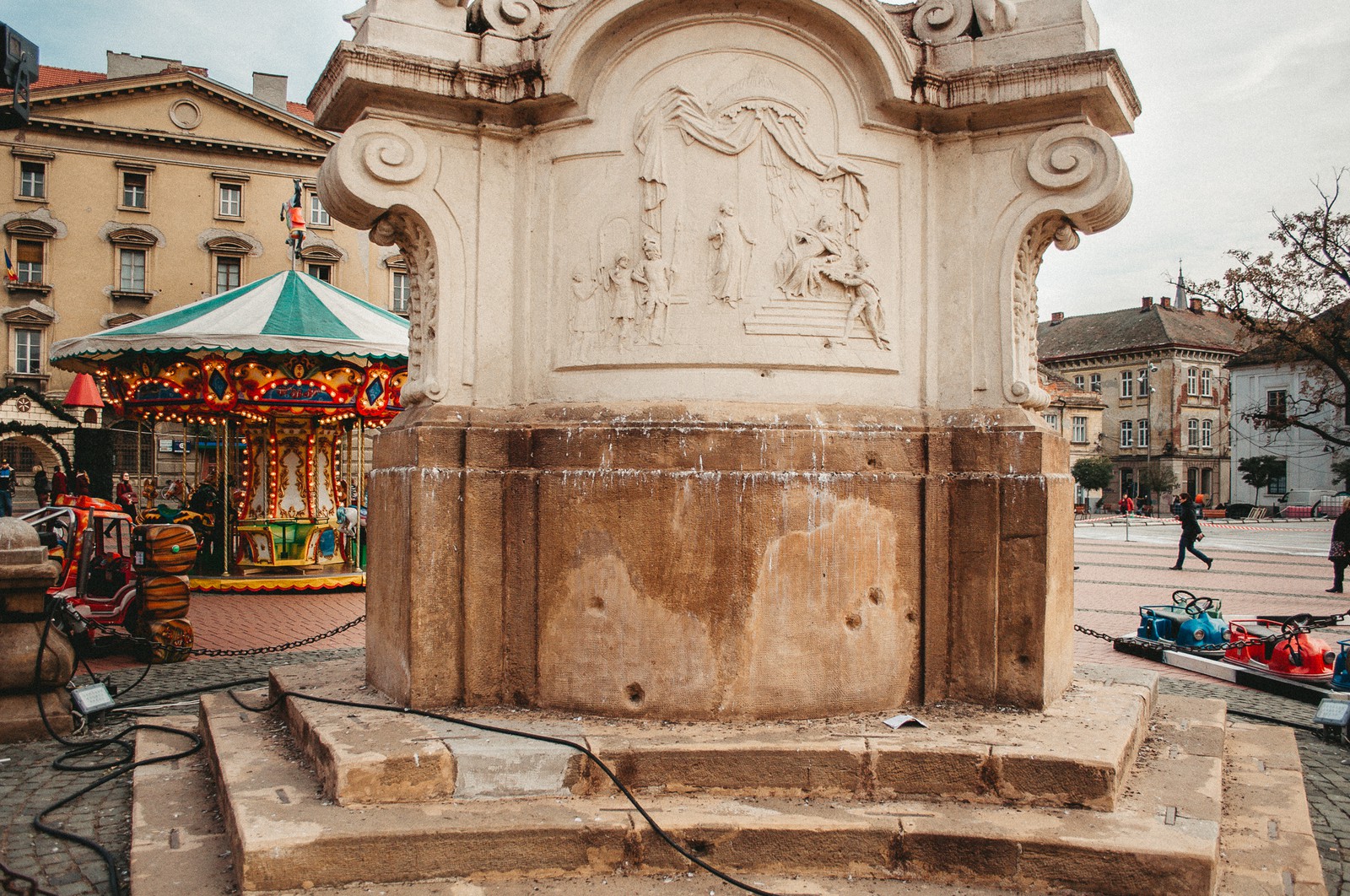
The heritage of the Romanian Revolution
In a way, the historical traces of the Romanian Revolution have become a part of the debate about the city's heritage, in that they are applied to buildings in the protection area that need to be renovated sooner or later, which requires a quick decision, either to keep and protect them or cover them up. By traces of the revolution I mean both the graffiti made during the revolution (such as the three black-painted crosses at the base of a building on Dimitrie Cantemir St) and the bullet damage in the central area of Timișoara. What do we do with them? Is there any protection protocol? Does it raise the perceived value of the building, the area, the city? There is a justified pressure to renovate the palaces and houses in the protected areas, which obviously includes the Löffler Palace from Revoluției Square, the Palace of the Credit Bank from Libertății Square and the buildings in Sf. Gheorghe Square, which still have a lot of bullet holes (there are a few buildings on Popa Șapcă St too). The building on Alecsandri no. 1, now under renovation / demolition, had several bullet holes in the walls of the inner courtyard, but, I think, now it’s too late to think about restoring them. Similarly, the gate of the People's Park was restored by replacing of the pieces of marble chipped by bullets.
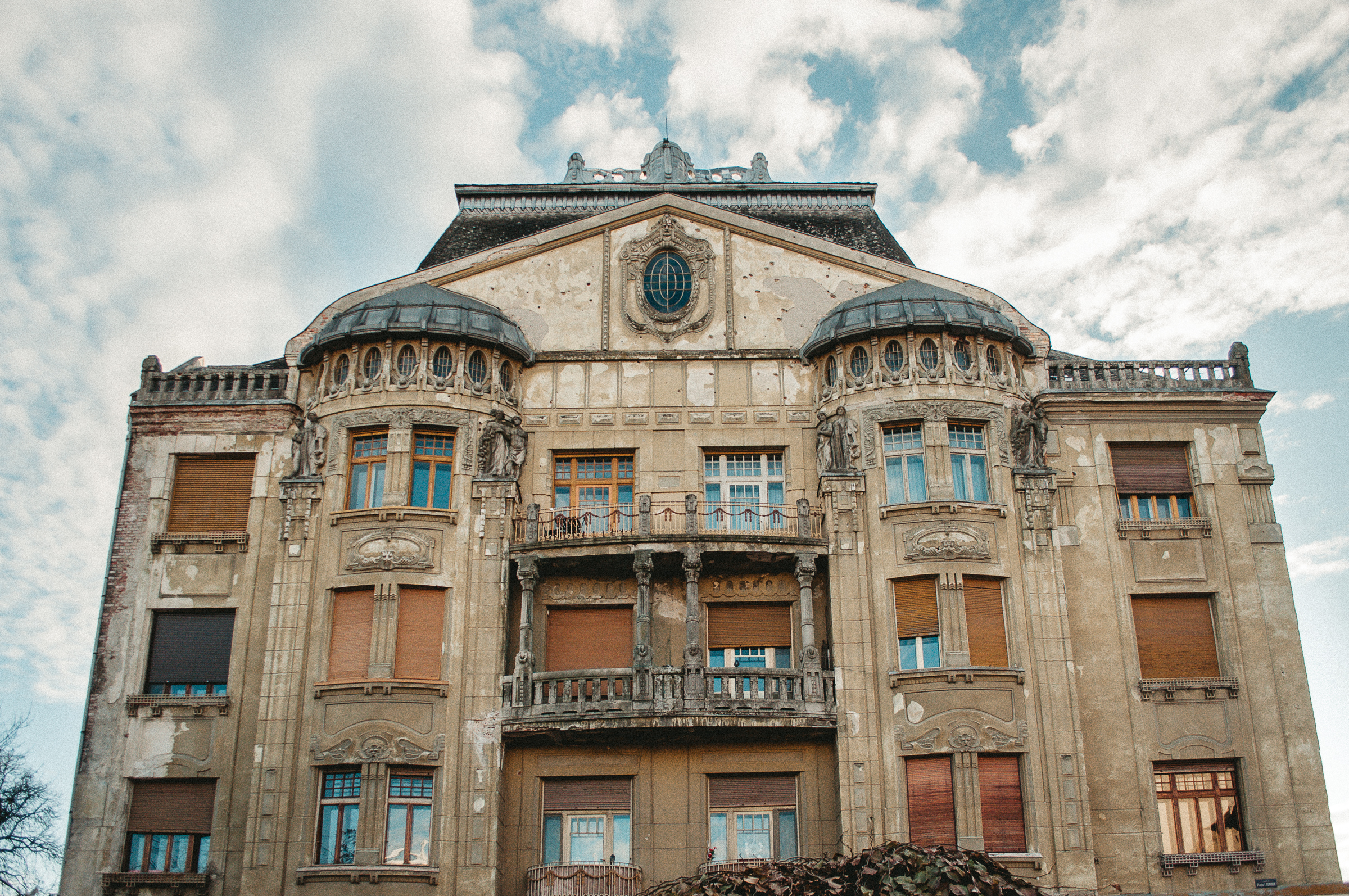
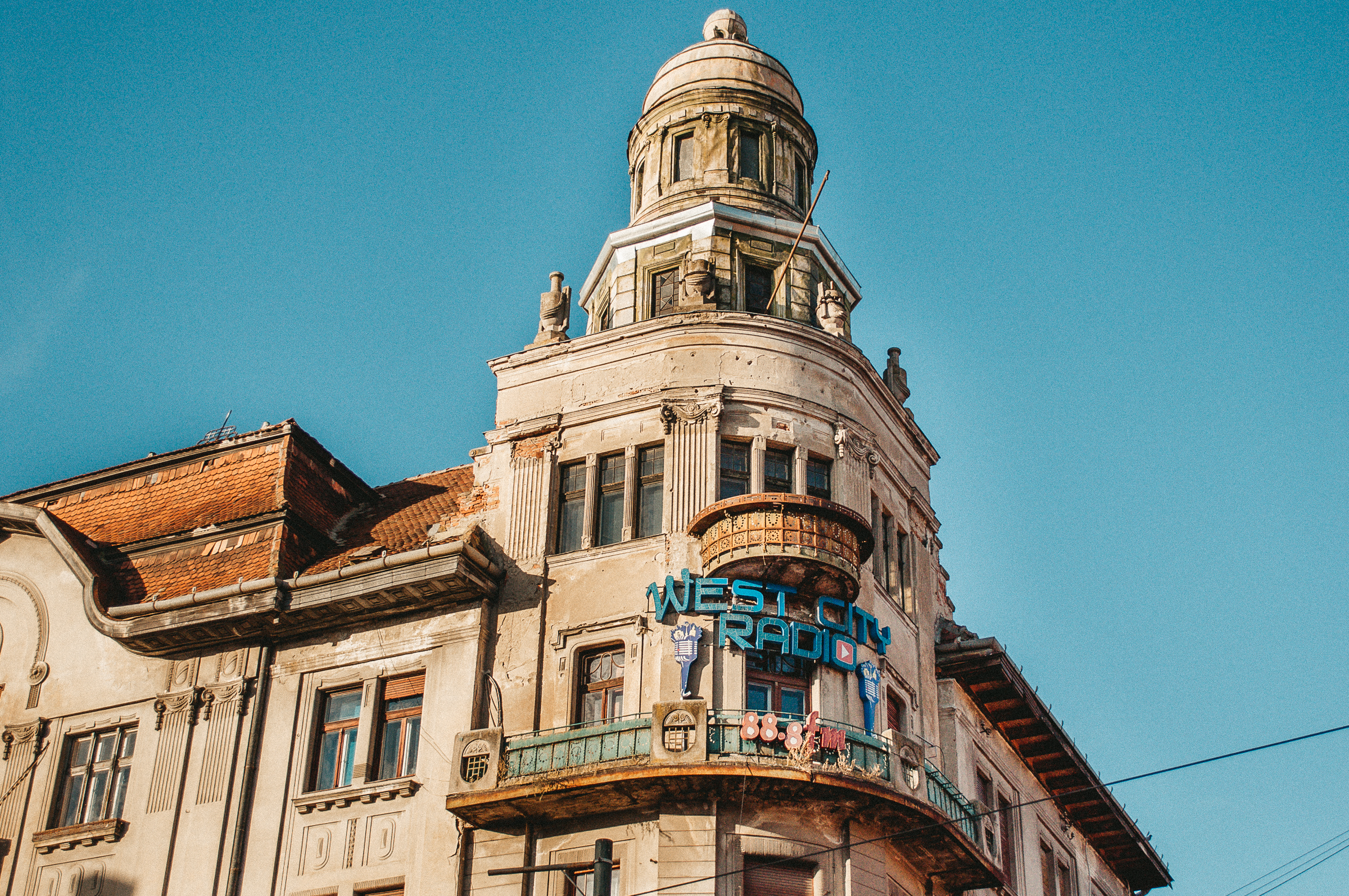
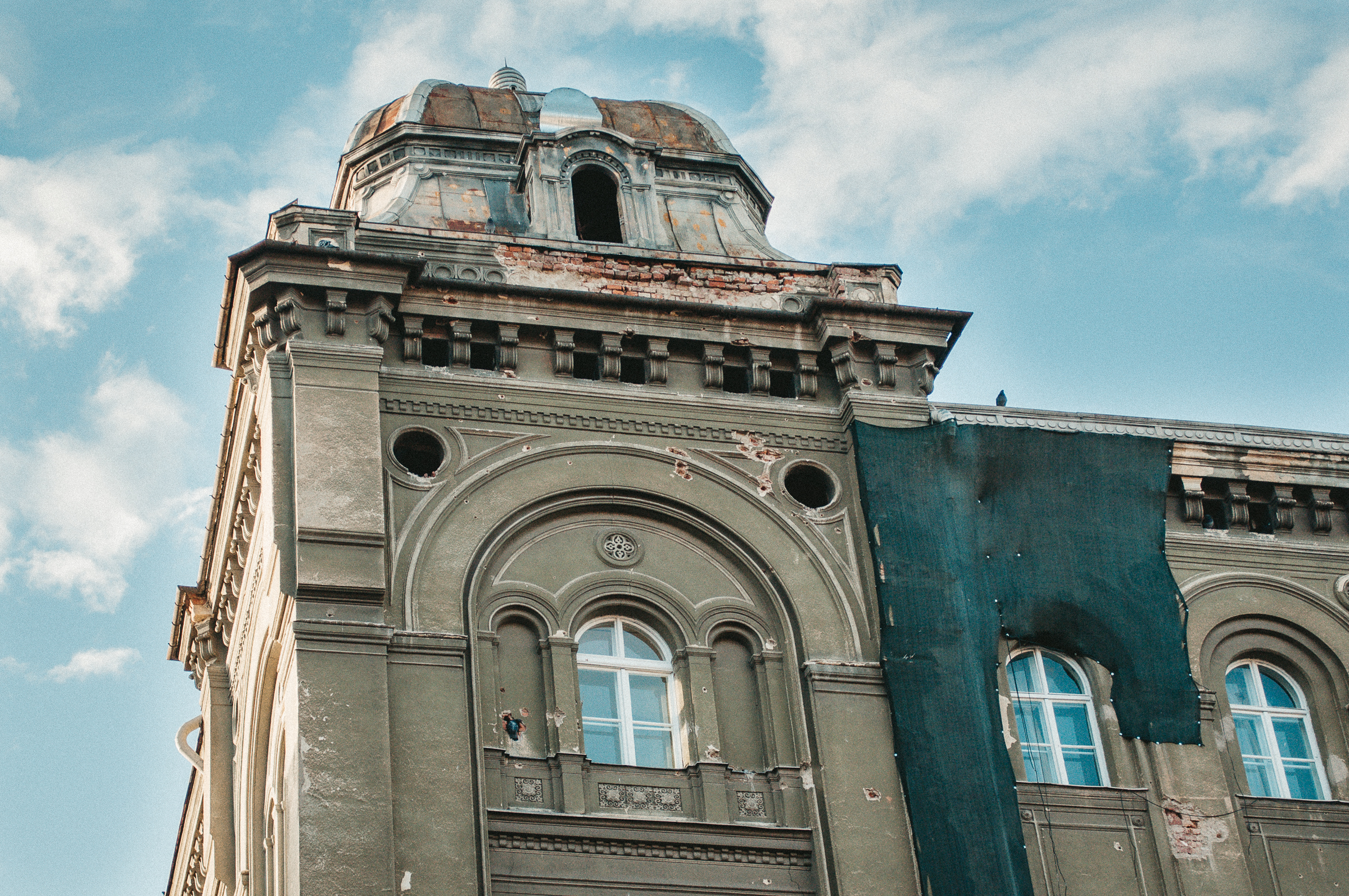

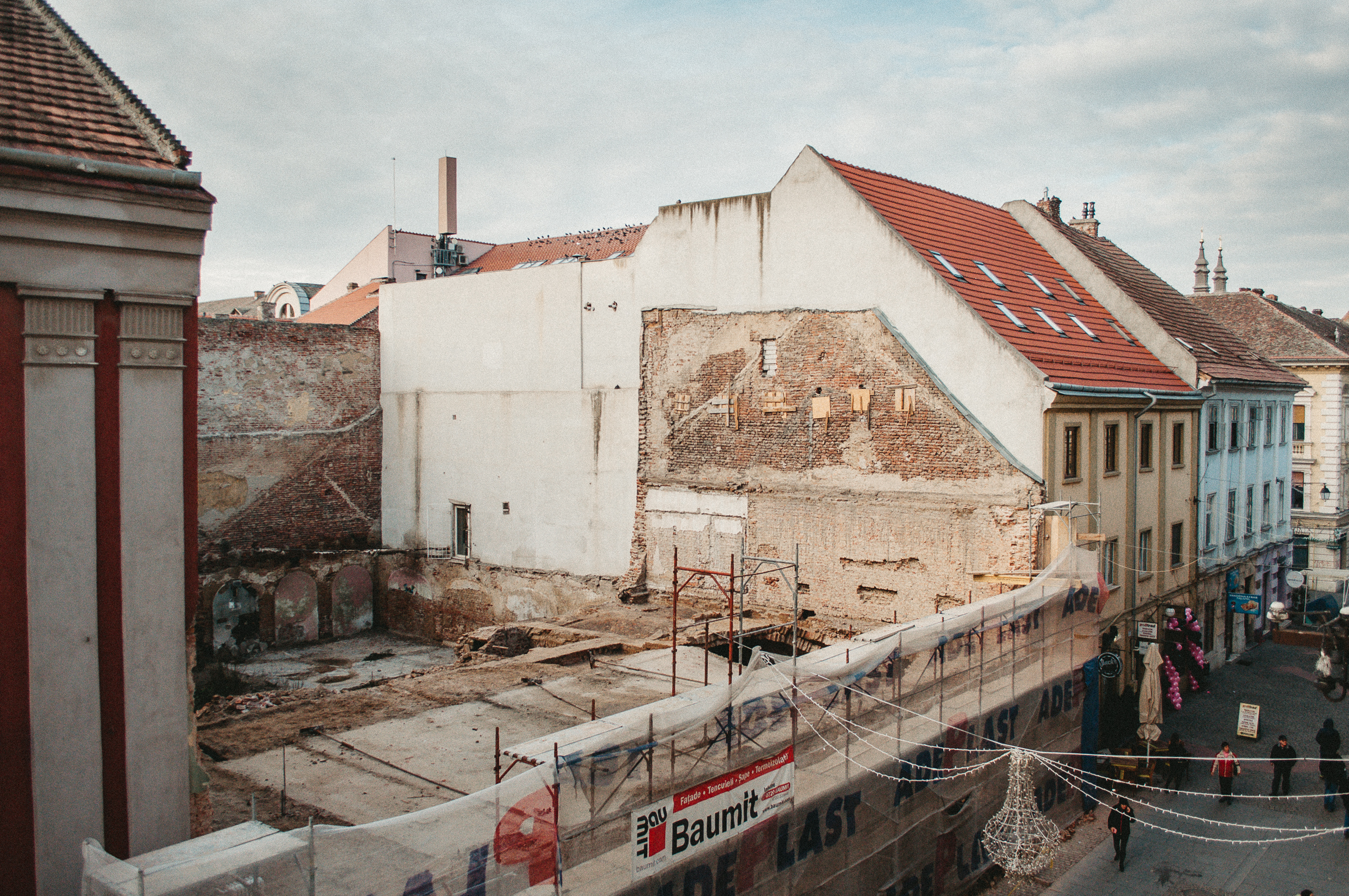
Important factors in making a decision are also the level of destruction, the large number or importance of those killed, the number of patrimony buildings in the area, the symbolism that can be attached to the building etc. Perhaps we have enough symbols of the Revolution (that is the Balcony of the Opera and the Reformed Church) and the level of destruction of the Löffler Palace facade is not comparable to that of the Prague National Museum, for example, and then a specialized restoration is not justified. Or, the owner is the authority that decides, in the absence of a clear protection policy for the traces of the revolution. Here I would mention the decision of the Patriarchate in 2013 to partially replace the steps of the Orthodox Cathedral, where many people died on the 17th and 18th of December 1989 (and then were incinerated or buried in the common grave in the Graveyard of the Poor). The originals were deposited in one of the enclosed courtyards of Şag Timişeni Monastery, and some fragments in the courtyard of the Memorial of the Revolution Museum in Timişoara. In 2013 there was a huge scandal in connection with the renovation of the cathedral steps, post factum, of course, which also brought back the episode of the blocked gates of December the 17th, 1989.
What are the others doing? In Sarajevo, it was decided to pour red resin in the holes made by the mortar shells explosion (shot by the Bosnian Serb army during the 1992-1996 siege), which disappears as the asphalt is replaced, a pragmatic and respectful solution commemorating both the genocide of the Balkan war and the particularity of this urbicide (city massacre). The visual impact of the roses, as they are called, is incredible, considering that during the siege, an average of 300 mortar shells were fired each day. In the USA, Franklin, the Carter House still retains all the 1000 bullet holes made during the assault by the Southern Army in 1864, at the order of General John Bell Hood. Being the most damaged building of the period, it was preserved as such, as a symbol of resistance. Nothing in Timisoara has reached a level of destruction similar to these cases, which makes the argument for preservation and restoration even more difficult. On the other hand, in India, in Amritsar, the entrance to the Golden Temple, which was riddled in 1984 during the Blue Star operation, was excluded from the Sikh temple restoration process to serve as a witness in the ongoing investigations of the attack. The longer the investigation takes, the greater becomes the need for the conservation of the remains, on the symbolic level too. In Romania too the investigation into the revolution file hasn’t ended, even though I assume there’s been no evidence gathering for years.
Somewhere in the middle is the case of the National Museum in Prague, riddled with bullet holes by the Soviets in the 1968 invasion, which just came out of a restoration this year, on October 27th. Although the conservation of the façade has been properly dealt with, the bullet holes are now barely visible. The visual impact in this case is much diluted, as well as its importance as a symbol of the mindless destruction of the Soviet intervention. For Timișoara, the Opera Balcony is the main symbol of the Revolution, but it is a symbol of the freedom of expression and not of the violence of repression by the Communist state. Yes, the level of destruction is small compared to the cases analyzed above, but in the context of the fall of the Iron Curtain in 1989, the Romanian revolution is a unique moment of violent repression. The Reformed Church of Timișoara underwent several renovations in 29 years, what remained are the inscriptions in marble while the famous graffito is reproduced on a plate (Éljen Tőkés László! Szabadság!). In some cases, the decision was taken by the owner of the building or the architects who are in charge of its renovation. A complex and notorious example is the restoration of the Reichstag building in Berlin in 1999 when architect Norman Foster decided to keep traces of Soviet bullets and graffiti throughout the building, after negotiating with different authorities (racist inscriptions, for example, were removed). In Timișoara, the renovation of the St. Mary and St. Nepomuk Monument in Libertății Square, significantly damaged on December 17th, 1989, was done by keeping visible the bullet holes at the level of the pedestal, at the request of Traian Orban, the manager of the Memorial of the Revolution Museum. Maybe it’s enough, this sole keepsake of the traces of the revolution, at the base of a monument commemorating the victims of the plague epidemic of the eighteenth century. Two in one. The old one assuring the life of the new one.
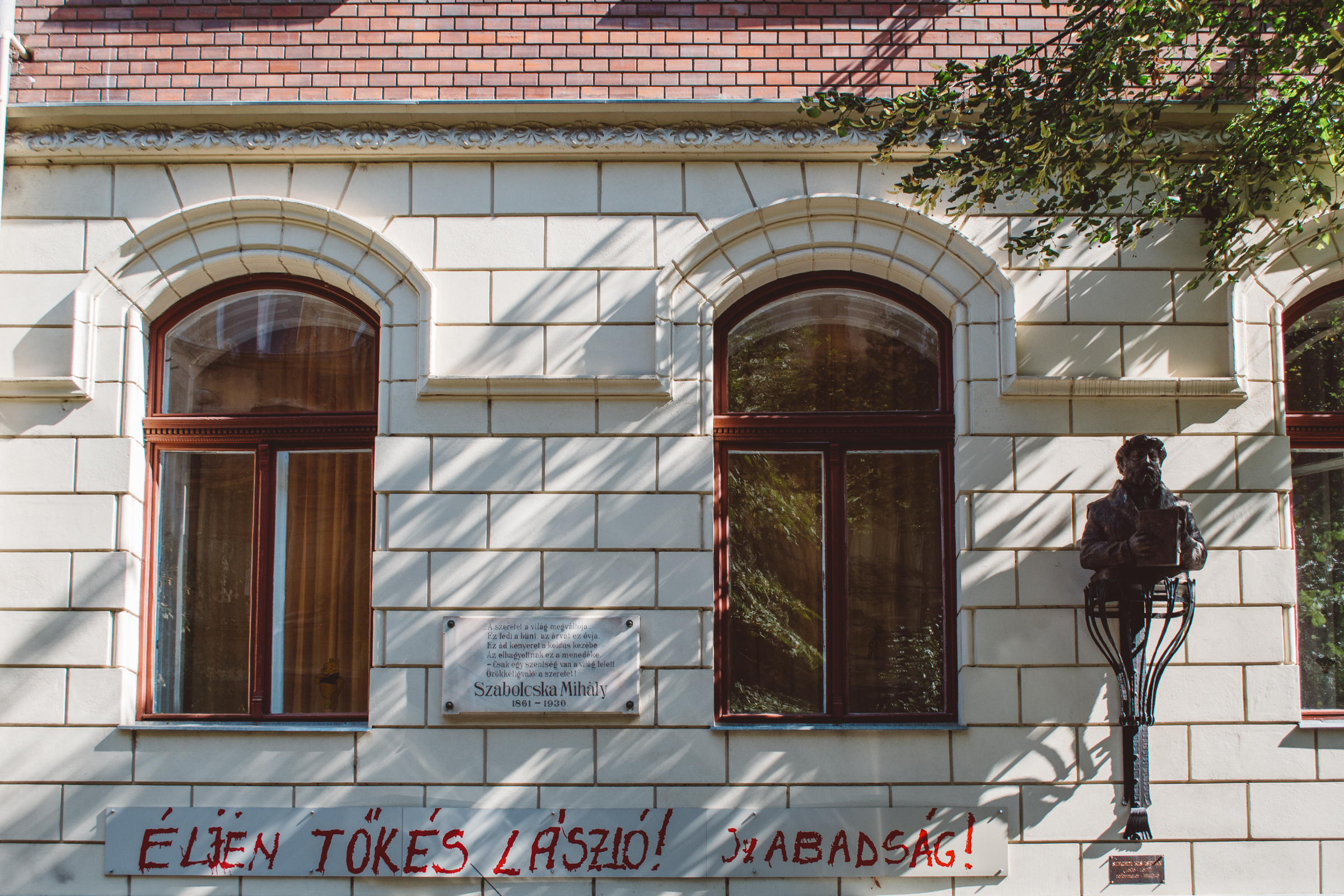
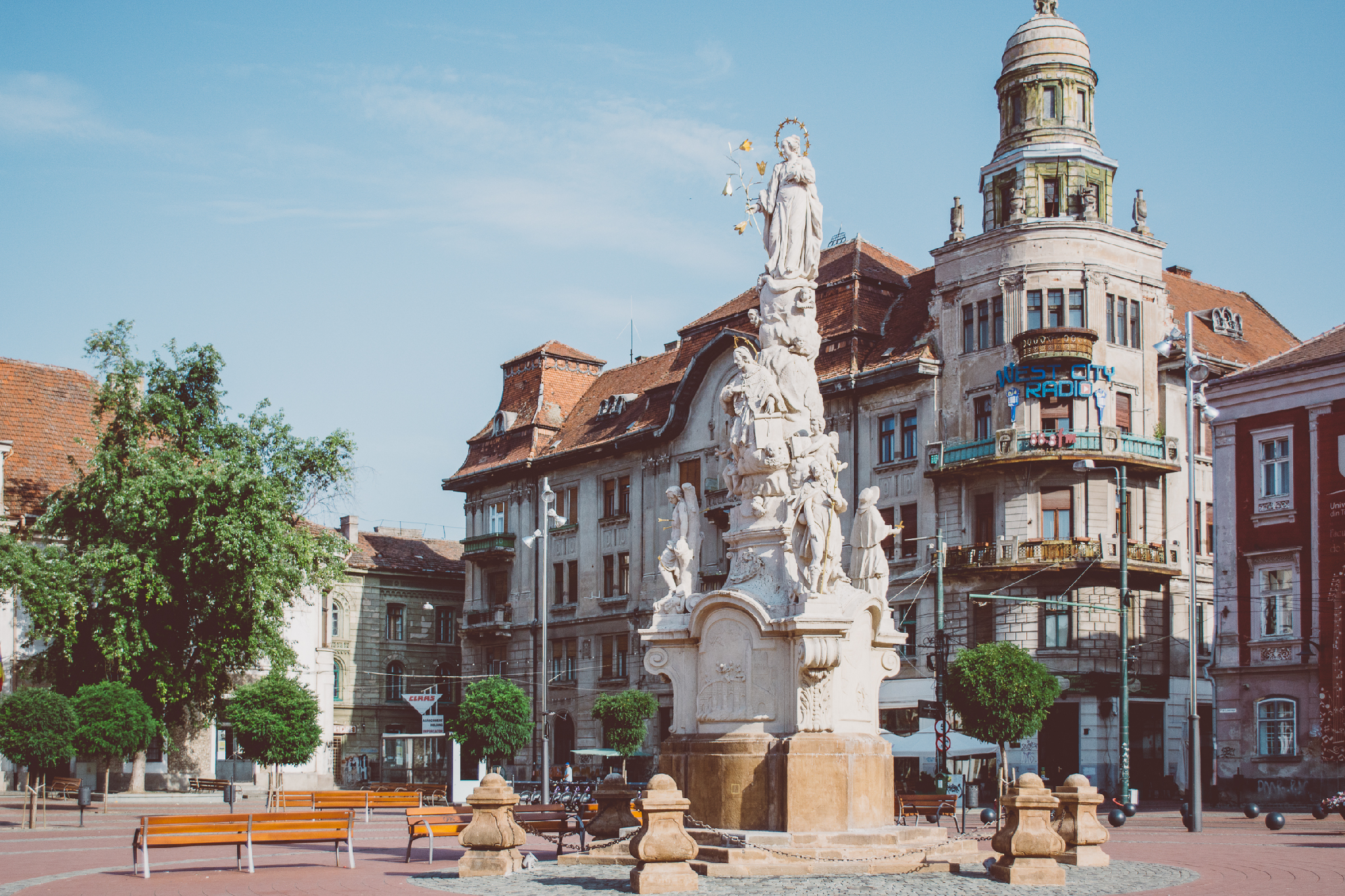

Monuments are generally favored, they bring a metaphorical or allegorical view of historical facts filtered through the artist's ego. Now, in Timișoara, there is a route of monumental sculptures that highlight the moments and places of the revolution. But one does not have to replace the other. It's like we’d prefer the poetry over history, although each one has its own purpose. Although the level of destruction is not close to that of the above cases, however, given that Timișoara is a martyr city, a wider and more specialized discussion should be held in connection with the possible dressing of the scars of the Romanian Revolution, for both our memory and our tourists. Before the renovation. What would I like as a city dweller as a commemoration of the 30th anniversary of the Revolution? Defining a protection zone, a witness-surface which could be isolated and protected on one of the more damaged facades, located in a tourist area, close to the revolution route. The perfect candidate, from my point of view, is the Löffler Palace, so close to the opera balcony, perhaps the most important symbol of the revolution.
Sources:
- Bullet impacts and built heritage damage 1640–1939, Heritage Science
- Știrile PROTV
- Știrile ACTIVENEWS
- Sarajevo - rută de război
- Casa Carter - American Heritage
- Poarta de intrare a Templului de Aur rămâne așa cum este, urmele de gloanțe vor fi protejate, articol HINDUSTANTIMES
- Stadiu dosarul Revoluţiei, Ministerul Public, Parchetul de pe lângă Înalta Curte de Casaţie şi Justiţie
- Restauratorii au eșuat în încercarea de a conserva urmele de gloanțe de pe Muzeul Național, articol Radio Praga
- Clădirea Reichstag-ului din Berlin, chiar înainte de prima restaurare, 1958, articol website rarehistoricalphotos.com
- Reihchstag - Clădirea Parlamentului, Foster și partenerii
- Traseul Revoluției din Decembrie 1989
- Harta Monumentelor închinate Revoluției